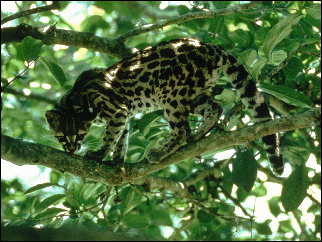|
It hunts for
small mammals and birds and is said to be an efficient climber. The litter size is small - only one or two kittens.
Because of the banning of other wild cat species, the Tiger Cat
became the major source of wild skins for the fur trade in the 1980s, leading to an annual slaughter that reached
a peak in 1987, with 84,500 animals killed. Because of the widespread hunting and the loss of habitat, this cat,
like most other species of wild felines, is becoming increasingly less common.
|


![]()